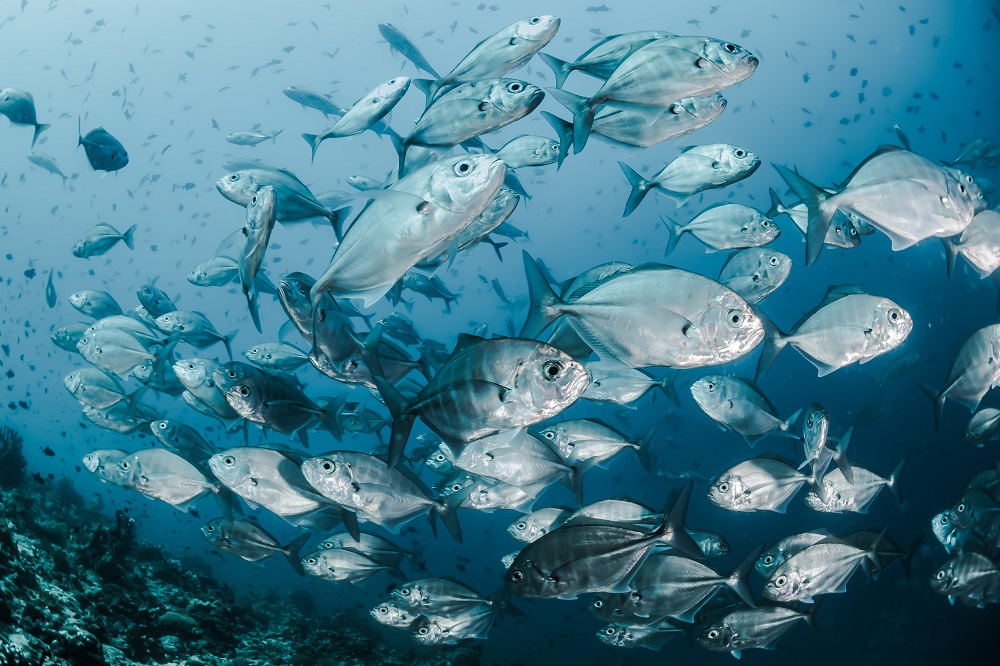
SUMMARY
“Microplastics are like dust. We’re breathing them all the time and they’re accumulating in us,” says ecologist Adrian Jordaan. He and colleagues have developed a protocol for studying the issue in fish species around the world–a serious logistical challenge.
STORY
Microplastics are both ubiquitous and poorly understood. A new protocol will allow researchers around the world to monitor their presence in fish and, by extension, global ecosystems.
Each human body contains about a credit card’s worth of plastic, says Adrian Jordaan, associate professor of fish population ecology and conservation at the University of Massachusetts Amherst, citing colleague Michael Bank for the comparison.
That may sound improbable, but the issue is often hard for people to perceive. “We have a hard time understanding things we don’t see,” says Jordaan. “Microplastics are like dust. We’re breathing them all the time and they’re accumulating in us.” Fish, filtering water through their gills, face the same onslaught.
Researchers are only beginning to understand the effects of microplastics on our bodies or the extent of microplastics pollution throughout global ecosystems. Different research projects have recently documented microplastics in marine snow–bits of organic matter that fall from the ocean’s surface down into deeper water–and in Arctic snow. These are shocking findings, says Jordaan, that underscore the urgency of understanding how this pernicious form of pollution moves through ecosystems.
To better understand the issue, Jordaan and collaborators will look at filter-feeding fish–types of shad and herring–that he calls “the hotdogs of the ocean” for their popularity among predators and quick lifecycles.
In order to meaningfully compare the amount of microplastics in fish from different locations, the researchers need to make sure that all of the fish arrive at Bank’s laboratory at the Institute of Marine Research in Bergen, Norway for analysis fully frozen and uncontaminated by any plastics along the way. That means swaddling each fish in aluminum foil and dry ice, as well as establishing an unbroken chain of custody from the fish’s emergence from the water to its arrival at the lab.
Although there are research vessels monitoring the waters near some of the study’s seven locations–Australia, Canada, Ghana, Norway, Taiwan, the United Kingdom, and the United States–commercial fishing is the only option in others. Collaborators in Ghana, for example, have worked to ensure as much consistency as possible to shield their samples from exposure to plastic. That can mean getting the fish straight from a fisher rather than from an open-air market with the potential for airborne microplastic exposure, for instance.
Collection of fish for the study will begin this summer. Once the fish arrive in Norway, Bank’s team will use its own stringent set of protocols, such as the scientists wearing only cotton clothing to avoid tiny plastic fibers in fleece, and managing static electricity in the space. The research team will then dissolve the fish and filter for microplastic particles. The researchers will also analyze the stomach contents of the fish to see how much plastic they ingested with their food.
Although the pandemic delayed the fieldwork portion of the project, Jordaan says working with WUN accelerated the creation of a global research team by allowing him to put out a call for collaborators within the network. The resulting team’s work will be part of a larger effort to track and understand plastic pollution globally. Jordaan and Bank are also coauthors of a perspective paper outlining what a truly comprehensive effort on that front would entail.
The WUN partner institutions for Life Below Water: Using Fish as Global Indicators of Microplastics are National Cheng Kung University (NCKU), University of Alberta, University of Bergen, University of Ghana, University of Massachusetts Amherst, and University of Southampton.